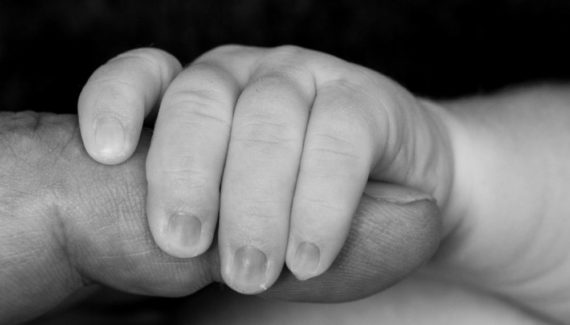Many people believe that abortion is an easy way out of having a baby, but what are the real costs? We will delve into what abortion actually is and what the consequences are.
What Are the Methods of Abortion?
- A medical abortion is when a drug is given to the mother that causes the body to terminate the pregnancy.
- A surgical abortion is when a surgical procedure is performed to remove the fetus.
Types of Medical Abortion
- Methotrexate and Misoprostol (MTX) is a drug that can be given to women in the first seven weeks of pregnancy. The first drug, Methotrexate, can be taken orally or given by injection. Then the second drug, Misoprostol, is given 3-7 days after the first drug is given. The drug causes the body to contract, expelling the fetus.
Side effects: The side effects are typical of a miscarriage: cramping, bleeding, nausea, diarrhea.
This is unsuccessful in 5% of cases, requiring surgery to terminate the pregnancy.
- Mifepristone and Misoprostol. The first drug Mifepristone is given to the mother which causes the uterine lining to break down. Then Misoprostol is given 36-72 hours later to cause contractions and cause the body to expel the fetus.
Side effects: The side effects are typical of a miscarriage: cramping, bleeding, nausea, diarrhea.
This is unsuccessful in 8-10% of cases, requiring surgery to terminate the pregnancy.
Types of Surgical Abortion
- Saline abortion: A saline solution is inserted into the uterus. The fetus swallows this saline solution which causes the fetus to die by “dehydration, brain hemorrhage and convulsions” according to prolifeaction.org. There have been cases where babies have survived this abortion and the babies were delivered with scalded skin and lungs. This procedure is rarely performed because of the risks to the mother.
- Dilation and Extraction: This type of procedure is called a partial-birth abortion because it is performed late in a pregnancy. The doctor uses forceps to grab the baby’s legs, delivering the legs while the head remains inside the uterus. Scissors are then used to pierce the baby’s brain and a suction is used to remove the baby’s brain. The baby is then delivered. United States laws prohibit doctors from performing partial-birth abortions due to the barbaric nature of the procedure. However, doctors can get around this law by first injecting the fetus with a drug that stops the heart.
- Dilation and Evacuation: This type of procedure is usually performed 13-20 weeks of pregnancy but can be used up to 28 weeks of pregnancy. Forceps are used to rip apart the limbs from the baby and the parts are removed. Sometimes the baby’s head is crushed to allow it to be removed more easily.
- Intracardiac injection abortion: In this type of abortion, a needle is placed directly into the baby’s heart and an injection of either potassium chloride or digoxin is given to the fetus to stop the heart from beating. The injection essentially causes a heart attack. This type of abortion is typically used in the case of multiple fetuses to reduce the number of babies in on pregnancy. This is typically performed between 10 and 12 weeks of pregnancy.
- Dilation and curettage: This procedure is used in the first trimester to remove the fetus by scraping the walls of the uterus. The arms and limbs are dismembered from the body. This type of abortion should not be confused with a dilation and curettage that is performed after a natural miscarriage to remove the dead fetus if the body has not properly expelled the fetus and placenta.
- Suction aspiration (vacuum): This is the most common type of abortion performed, between 6 and 12 weeks, but up to 16 weeks. The body of the fetus is torn apart when a sharp-tipped tube is inserted into the uterus. The fetal parts are then suctioned out.
Abortion websites leave out what actually happens to the fetus during an abortion. These websites claim that the fetus cannot feel pain, however, scientists now know that a fetus can feel pain in utero. Sonograms performed during abortions have shown that babies curl up and flinch and will try to move away from the instruments used during abortions. The nervous system and brain structures necessary to feel pain are in place by the time an abortion is done. There have also been cases were abortions were unsuccessful and babies were delivered alive and left to die on a table, cold and alone.
Abortion is not painless, to the mother or to the fetus. There is always physical pain and many times emotional scars as well. I personally know of several women who have had abortions and regret killing their child. There are reasons why women cannot raise their children, and that is understandable, but being an adoptive mother myself, I can attest to the fact that there are many people who would love to adopt these babies.
Another argument that is brought up by fathers is that they have no say in what happens to their unborn child. Laws in the United States protect the mother, but not the father. Always consult the father of your unborn baby before considering an abortion. And mostly, please consider the amount of pain abortion has on your unborn baby. Can you imagine having your skin and lungs scalded from saline, or a massive needle piercing from your skin to your heart, or what about having your brain pierced and sucked out, or your limbs torn from your body? All of this without pain medication? A baby’s heart begins to beat before a mother even knows that she’s pregnant. That living, breathing baby deserves to be treated as a human being.
If you are unexpectedly pregnant, please consider adoption. Visit Adoption.com to view adoption profiles from hopeful adoptive parents. Visit Adoption.com/unplanned-pregnancy to find guidance with your unplanned pregnancy.



